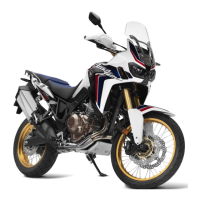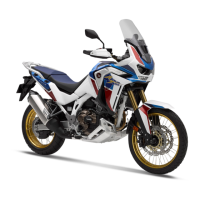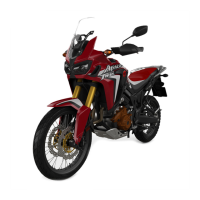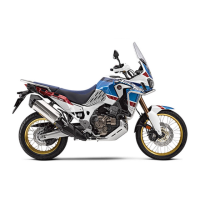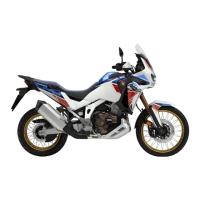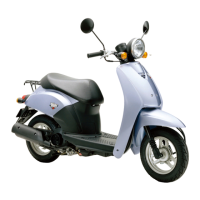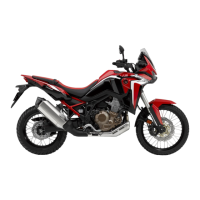
Do you have a question about the Honda Africa Twin CRF1100A 2022 and is the answer not in the manual?
| Displacement | 1084 cc |
|---|---|
| Bore x Stroke | 92 mm x 81.5 mm |
| Compression Ratio | 10.1:1 |
| Transmission | 6-speed manual |
| Fuel System | PGM-FI electronic fuel injection |
| Front Tire | 90/90-21 |
| Rear Tire | 150/70-18 |
| Engine Type | Liquid-cooled parallel twin |
| Max Power Output | 75 kW |
| Power | 73 kW (100.8 HP) @ 7, 500 rpm |
| Max Torque | 105 Nm |
| Torque | 105 Nm |
| Fuel Tank Capacity | 18.8 liters (4.9 gallons) |
| Front Suspension | 45 mm Showa |
| Rear Suspension | Pro-Link, adjustable |
| Front Brakes | Dual 310 mm |
| Rear Brakes | Single 256 mm disc with 1-piston caliper |
| Length | 2, 330 mm (91.7 in) |
| Width | 960 mm (37.8 in) |
| Height | 1395mm (54.9 inches) |
| Wheelbase | 1, 575 mm |
| Seat Height | 850 mm |
| Weight | 238 kg |
Guidelines to enhance safety and riding pleasure, including pre-ride checks and protective apparel.
Essential precautions for safe riding, covering protective apparel like helmets, gloves, and footwear.
Advice on break-in period, braking techniques, and general riding safety practices.
Identifies the location of key vehicle components and controls.
Details on the instrument panel, displays, indicators, and their functions.
Explains the operation and function of various switches on the handlebars.
Procedure for starting the engine and troubleshooting starting issues.
Information on gear shifting, recommended shift points, and transmission modes.
How to set, change, and cancel the cruise control system for maintaining speed.
Emphasizes the necessity of regular maintenance for safety and performance.
Specifies required maintenance tasks and their frequencies for optimal vehicle upkeep.
General guidelines and precautions for performing vehicle maintenance safely.
Procedures for checking and adding engine oil to ensure proper lubrication.
Instructions for checking brake fluid levels and inspecting brake pads.
Guidance on adjusting brake levers, front/rear suspension, and windscreen height.
Diagnosing and resolving issues when the engine fails to start.
Procedures for addressing engine overheating when the coolant temperature gauge indicates high temperature.
Explanation of various warning indicators on the dashboard and their troubleshooting.
Common issues with the audio system, Bluetooth pairing, and connectivity.
Guidance for diagnosing battery issues and blown fuses.
Information on vehicle data recording systems for performance and diagnostics.
Details about ignition keys, key tag, and procedures for key replacement.
Guidelines for washing, cleaning, and polishing the vehicle to maintain its condition.
Explanation of the vehicle's exhaust, noise, and evaporative emission control systems.
Details on vehicle warranty coverage, service recommendations, and dealer information.
Procedures for reporting potential safety defects to authorities and Honda.
Key technical specifications for the vehicle's main components.
Technical data including tire sizes, gear ratios, and fluid capacities.




